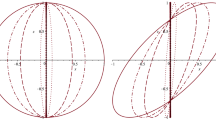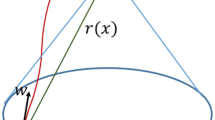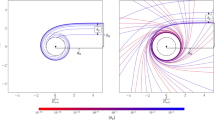Abstract
THE results of the eclipse expeditions of 1919 and 1922 leave little doubt that the deflexion of 1.75 predicted by Einstein for a ray of light passing close by the sun is a fact. Moreover, as a result of the experiments of Lebedew and Poynting, it is admitted generally that such a ray possesses momentum as well as energy. It does not appear to have been noticed that these experimental results lead to certain important consequences when they are combined with the generally admitted principles of conservation of momentum and of energy.
This is a preview of subscription content, access via your institution
Access options
Subscribe to this journal
Receive 51 print issues and online access
$199.00 per year
only $3.90 per issue
Buy this article
- Purchase on Springer Link
- Instant access to full article PDF
Prices may be subject to local taxes which are calculated during checkout
Similar content being viewed by others
Author information
Authors and Affiliations
Rights and permissions
About this article
Cite this article
SCHOTT, G. Some Consequences of the Gravitational Deflexion of Light. Nature 112, 471–472 (1923). https://doi.org/10.1038/112471a0
Issue Date:
DOI: https://doi.org/10.1038/112471a0
Comments
By submitting a comment you agree to abide by our Terms and Community Guidelines. If you find something abusive or that does not comply with our terms or guidelines please flag it as inappropriate.



